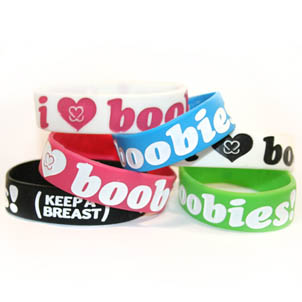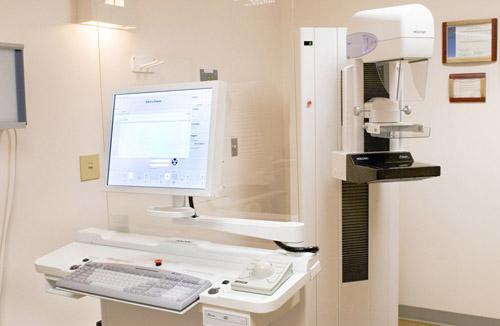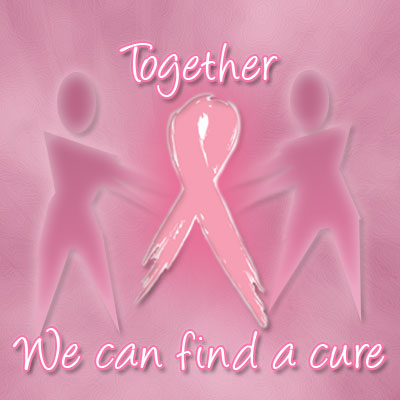Keep A Breast of Yourself
Breast Cancer Awareness
Over this past month I had my second ever mammogram. My first was after a family member was diagnosed with an Inductal Papilloma Benign Tumor. I had always followed my doctors orders and was taught early on about breast self exams. But this second exam went a bit different then my first.
We all hear about breast self-exams (BSE), or regularly examining your breasts on your own, how it is an important way to find a breast cancer early, when it’s more likely to be treated successfully. Not every cancer can be found this way, but it is a critical step you can and should take for yourself. I can’t stress this enough. Over the past few weeks, I could only ask myself, what more could I do..and this week I found out.
After a mammogram, you are either sent a clean bill of health letter or you receive a call from your doctor with further action needed. I got the letter with a request for more testing, so I was a bit confused. What was I looking for?
Few women really want to do a breast self-exam, or BSE, and for many the experience is frustrating — you may feel things but not know what they mean. However, the more you examine your breasts, the more you will learn about them and the easier it will become for you to tell if something unusual has occurred.
I was informed that I had a large dense spot in one of my breasts. They could not detect what it was, so it needed further testing. Below is a picture of me waiting for yet another test. The thoughts that raced through my mind over several hours of exams, blew me away. I took this picture to remind me of that moment and to remind me that I need to do what I can, so others aren’t in this same spot waiting….
I was then moved to another room for an ultrasound. I stared at this machine for another hour. Ultrasounds in my world normally were part of joyous occasions revolving around my 4 children.
In the end, I was given a clean bill of health, and told that I was part of a group of women that have large amounts of dense mass that require mulitple testing to rule out any cancerous sightings. As I walked out and passed all the waiting rooms I visited, all I could do was pray for all the women who sat there like I did, hours before. I prayed for them as I walked to my car, I prayed for them as I drove home and I hope you say a prayer for them right now. We must take care of ourselves and educate one another.
Take a peek at the “I Love Boobies” campaign out in the community. The Keep A Breast Foundation’s (KAB) mission is to help eradicate breast cancer by exposing young people to methods of prevention, early detection and support.
It is a unique national campaign with a new approach, and I love the positive style of communication about breast cancer. We need to get young people better equipped and allow young people to engage and start talking about a subject that is scary and taboo and instead make it positive and upbeat.
Need some tips for BSE?
- Try to get in the habit of doing a breast self-examination once a month to familiarize yourself with how your breasts normally look and feel. Examine yourself several days after your period ends, when your breasts are least likely to be swollen and tender. If you are no longer having periods, choose a day that’s easy to remember, such as the first or last day of the month.
- Don’t panic if you think you feel a lump. Most women have some lumps or lumpy areas in their breasts all the time. In the United States, only 20% of women who have a suspicious lump biopsied turn out to have breast cancer.
- Breasts tend to have different “neighborhoods.” The upper, outer area — near your armpit — tends to have the most prominent lumps and bumps. The lower half of your breast can feel like a sandy or pebbly beach. The area under the nipple can feel like a collection of large grains. Another part might feel like a lumpy bowl of oatmeal.What’s important is that you get to know the look and feel of YOUR breasts’ various neighborhoods. Does something stand out as different from the rest (like a rock on a sandy beach)? Has anything changed? Bring to the attention of your doctor any changes in your breasts that last over a full month’s cycle OR seem to get worse or more obvious over time.
- You may want to start a journal where you record the findings of your breast self-exams. This can be like a small map of your breasts, with notes about where you feel lumps or irregularities. Especially in the beginning, this may help you remember, from month to month, what is “normal” for your breasts. It is not unusual for lumps to appear at certain times of the month, but then disappear, as your body changes with the menstrual cycle (if you are still menstruating). Only changes that last beyond one full cycle, or seem to get bigger or more prominent in some way, need your doctor’s attention.
- The Breast and Cervical Cancer Control Program (BCCCP) is a federal program funded through Centers for Disease Control And Prevention (CDC) to provide free mammograms and pap tests to eligible women.











Leave a Reply